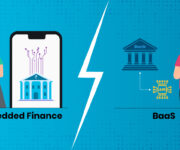Never before have the times been more volatile and dynamic as now. Recession coupled with regulatory pressures, financial reforms, and the recent global pandemic has not made anything easier for the legacy lending industry. As a result, the lending industry faces several challenges while approving and disbursing loans.
Cultural Shift: Traditional lending institutions work through manual systems and processes. Even where the systems are automated, there is much manual work involved. Most of the time, the applicant must take the paperwork to the branch or office.
Rising expectations: Consumers today are savvier and more informed than before. They expect a high level of convenience and customisation from their banking experience. As per a survey, future generations will be more interested in omnichannel banking than visiting physical bank branches.
Lack of personalised experiences: Although NBFCs claim to give highly personalised services to clients due to their need to present themselves as different from traditional lenders, the execution is challenging. Customers are often dissatisfied as the loan disbursal norms are generalised packages, whereas customers have diverse needs.
Tedious lending process: The lengthy processing of documents and loan applications consumes a lot of time. Lenders also need to maintain a large workforce to manage the work, adding costs and expenses.
Technology platforms: Lending institutions are expected to provide mobile banking through internet banking and mobile apps to serve customers remotely.
Other competitors: Lending institutions such as banks and NBFCs face competition from each other and others like microfinance institutions, retail and technology firms who influence their existing customer base and financial expertise and leverage it to venture into banking, payment, and lending services.
However, operational challenges also come with additional opportunities. So how can embedded finance help?
Embedded Finance and API in the Lending Industry
As COVID-19 has impacted our lives completely, traditional lending models have been under intense pressure. The landscape for lending services is evolving fast, with the rendering of financial services no longer under the aegis of conventional financial institutions. Due to embedded finance, non-financial companies can position themselves as service providers with an array of financial products to suit the customer requirements.
Earlier, if a business wanted to offer financial services, it had to create a separate domain within the organisation. This often meant considerable expenditure and often took years to develop and turn profitable. However, the embedded finance infrastructure enables fintech experiences within the non-fintech platforms for end-users and at the point of demand.
Embedded finance is the next stage of evolution. For example, Shopify was the pioneer among e-commerce companies that enabled merchants to accept payments directly through the platform instead of going through the third-party payment gateway. (BaaS) Business as a Service is helping in further speeding up the spread of embedded finance. These platforms facilitate online merchants to plug into financial systems using APIs to integrate financial services into user experiences efficiently.
Role of Embedded Finance in Lending
As embedded finance is becoming more widespread, it has potential for growth and opportunity in the lending ecosystem. Before the arrival of embedded finance in the lending scene, there was a gap between the consumer and the company they were doing business with. The consumer needed to contact a traditional lending institution such as a bank or a lender to cover the gap. The consumer had to either take the credit card from the bank or approach a lender for a loan to finance the purchase. With embedded finance, the consumer can apply for and get a loan right at the point of purchase. For example, e-commerce giant Amazon has a “Buy now, pay later” option that splits the purchase cost into an automatic loan from the store itself rather than a third-party lender.
With embedded finance, the role of the third-party lender or the bank diminishes. It enables finance companies to close the gap between themselves and the consumer. The service offers seamless integration and uses a centric lending experience that is economical as well.
Future scope of embedded finance in the lending industry
As newer lending models appear, there is a shift in how consumers perceive and use financial products. The current tech-savvy generation prefers to open an account or seek a loan without interacting with a core financial service provider. The preference is also driven by the willingness of customers to share their data over the internet. The preference also makes the customer proactive towards a product that offers them pricing and convenience.
Several organizations are thinking of offering financial products, and with evolving technology, there are several options:
- Develop their own fintech tools and start a financial product
- Tie up with existing fintech majors and resell their financial products.
- Offer a financial product in partnership with an embedded finance company.
Of the three ways above, embedded finance is the most promising option driving the wave of embedded lending and disrupting the fintech space.
Embedded Lending – the Next Big Thing
Embedded lending is here to stay and gathering momentum for several reasons
Rise in digitisation: Contacting a traditional lender has become a thing of the past as businesses and customers move towards digitization. With the popularity of financial services through digital channels, more aggregators and marketplaces are emerging, giving access to financial services with embedded lending.
Newer revenue channels: With increasing competition, more companies are looking for ways to monetise and develop alternative revenue channels. Offering financial products is one way, and embedded lending is one of the ways to optimise that.
Pandemic constraints: This is the ripe time for disruptions in how financial services are rendered with social distancing norms and lockdowns. Data security and trust are also an issue. Customers prefer to avail services that come in a package, which works best for non-financial service providers offering an embedded lending product.
Embedded lending has a significant role to play in the lending ecosystem. It makes more sense because financial products can be customised and more relevant with its deep and seamless integration.
Banks will partner with fintech to form lend tech: financial institutions can leverage their vast data to acquire new customers, provide better service to existing ones, customize financial products, and enable repeat transactions.
Digital platforms will play a key role in financial services distribution: embedded finance will allow digital platforms to serve their customers more efficiently and in ways that traditional lending models cannot. With changing dynamics, customers now expect the digital platforms to fulfil their needs more deeply, foster innovation and play a pivotal role in distributing financial services to customers.
Innovative financial products: Embedded finance allows lending institutions to customise financial products to suit customer needs. In addition, new data sourced from platforms will facilitate advanced underwriting and enable the approval of the customer.
Vertical SaaS growth: Embedded finance has enabled SaaS companies to provide financial services to their core software products financial services. Customised software products help save most problems of customers.
Improved financial services: More customers can be acquired efficiently and at a lesser cost while also bringing repeat customers. This improves the margins of lending institutions, implying that they can offer the same financial products to customers with optimised costs.
To Sum Up
Embedded finance is here to stay as it is the driving force behind how lending institutions will operate. Digital platforms are pivotal in creating a new generation of effective and innovative financial products. Business needs to leverage embedded finance to stay ahead of the competition. Lenders get to benefit from better margins. For this, they need to partner with digital platforms to gain access to the diverse pool of customers available to them.
To have a financial service that can match all social demographics and economics, you need the right fintech service provider. Finezza offers efficient consumer-focused LOS & LMS solutions that adhere to the highest standards. The best part is their tech-focused approach. What embedded finance solutions do you need? Let us know.




Leave a Reply